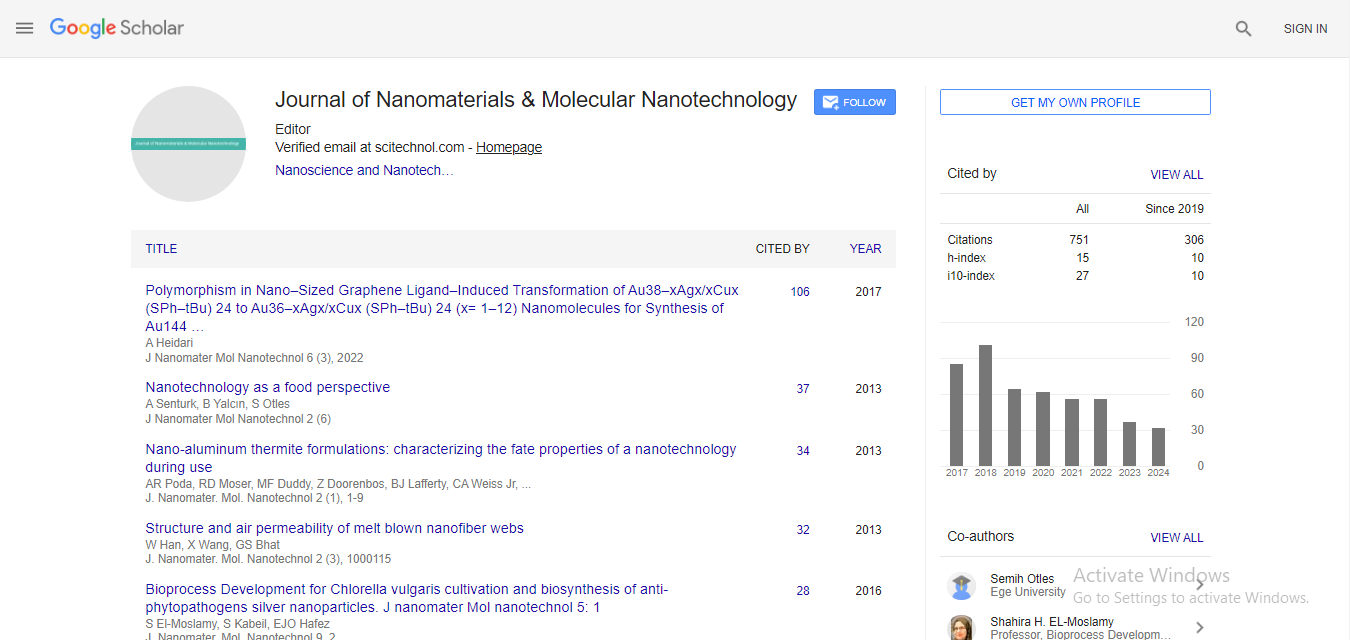Nanomaterials for energy applications: Present and future
Daniel Choi
Khalifa University, UAE
: J Nanomater Mol Nanotechnol
Abstract
Making it small is a technological edict that has changed the world. Nano engineered material system is a rapidly evolving area of science and engineering that holds the promise of creating new techniques to manufacture devices and develop advanced technology. It is fundamentally changing the way materials and devices will be produced and it will be central to the next era. The presentation includes nanoengineered materials for one of the energy storage applications, supercapacitor. Electrochemical Supercapacitors (SCS) show high energy density and very long cyclability due to high power density. However, the key challenge for further enhanced capacitance SC lies in fabricating stable structure which can provide large chemically active surface are of materials for SCS. Multi-layers of graphene consisting of graphene separated by a space material were proposed by researchers in order to fabricate high surface-active areas for SCS. However, the graphene layers in such 3D structure may come into contact unavoidably, which may lead to aggregation. We are developing processes for fabricating 3-dimensional (3D) Graphene-Carbon Nanotube (CNT) composite structures to fabricate novel SCS. Graphene- CNT composite 3D structures are novel materials for supercapacitors which possess: (1) Large chemically active surface area for large capacitance (2) High electrical conductivity in all directions (3) Enabling novel thermal management and (4) Realizing enhanced mechanical and chemical stability of devices. Recently, we demonstrated the growth of CNTs on top of graphene layers. The entire process includes: (1) Growth of vertical array of CNTs on silicon substrates by a Low-Pressure Chemical Vapor Deposition (LPCVD) process using Anodized Aluminum Oxide (AAO) nano porous template fabricated on Si substrates and (2) Growth of graphene by another LPCVD process on top of a vertical array of CNTs. The average measured capacitance of the graphene-CNT structure was 850 ïÂÂFcm-2 at 10 mVs-1.
Biography
Daniel Choi received his B.S. in Metallurgical Engineering from Seoul National University (South Korea) and Ph.D. in Electrical Engineering from UCLA. Dr. Choi was a staff member for three years at the Aerospace Corporation and a task manager Jet Propulsion Laboratory (JPL)/NASA for nine years, leading a number of space-related projects such as Phoenix and Mars Science Laboratory project. He was an associate professor and director of the Materials Science and Engineering (MSE) program at University of Idaho (USA). He is Founding Department Head of the Mechanical and Materials Engineering in the Masdar Institute of Science and Technology, Abu Dhabi, UAE. He is also a Science Team for UAE Emirates Mars Mission Program.
E-mail: daniel.choi@ku.ac.ae
 Spanish
Spanish  Chinese
Chinese  Russian
Russian  German
German  French
French  Japanese
Japanese  Portuguese
Portuguese  Hindi
Hindi 



